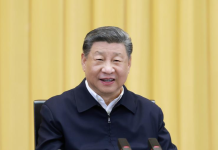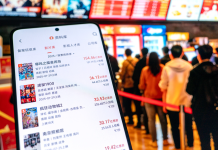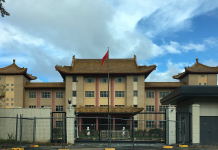DM Monitoring
HONG KONG: With a spate of cases involving homemade bombs and dangerous chemicals in recent months, Hong Kong is facing the rise of home-grown terrorism.
Analysts pointed out that Hong Kong’s home-grown terrorism, derived from radical groups involved in recent disturbances and intertwined with separatists advocating “Hong Kong independence”, is posing a great threat to the security of the Hong Kong Special Administrative (HKSAR) as well as the nation at large.
Warnings about the rise of terrorism in Hong Kong, which has long been dubbed one of the world’s safest places, were repeatedly heard as the police have handled over 10 cases involving improvised explosive devices (IEDs) and dangerous chemicals since June 2019, with some of the homemade bombs being placed in crowded places including schools, hospitals, border crossings and metro train compartments.
In one of the latest cases, the police found multiple IEDs and highly toxic and highly flammable chemicals hidden in a deserted school campus on May 2. The seizures include a pressure cooker ready for making an explosive device similar to the pressure cooker bombs used in the 2013 Boston Marathon terror attack, which killed three people and injured several hundred.
In another shocking case days earlier, a homemade bomb was found at the Hong Kong police headquarters on April 20 in a parcel addressed to the head of the police forces. The police’s Senior Bomb Disposal Officer Alick McWhirter said at a briefing about the case that postal homemade bombs have been commonly used by terrorists around the world over the past few decades. “And sadly, today, this is yet another indication that in Hong Kong we are still dealing with homegrown terrorism.”
In April alone, several cases of intimidation with explosives, other dangerous goods or bomb hoax occurred in Hong Kong. Not just the police, some government offices, news media and ordinary people were also targeted.
When the police released in March its review of Hong Kong’s law and order situation in 2019, the rise of home-grown terrorism was highlighted.
During the disturbance sparked by the now-withdrawn ordinance amendments concerning fugitive transfers since June 2019, online publicity materials evolved into “weapon making handbooks” or even “guides to kill police”, and violent acts kept escalating from throwing water bottles to hurling bricks, mills barriers, petrol bombs and corrosive liquids, shooting arrows and using genuine firearms, bullets and explosives, the police noted.
“In order to express their dissatisfaction with the society and the government, rioters chose to hurt the public and cause social panic, which exactly is the behavior of home-grown terrorism,” the police said. Gu Minkang, former deputy dean of the law school of City University of Hong Kong, pointed out that Hong Kong’s home-grown terrorism is derived from radical groups involved in disturbances including the 2014 illegal “Occupy Central” movement, the 2016 Mong Kok riots and the 2019 unrest, and is intertwined with separatists advocating “Hong Kong independence”.






